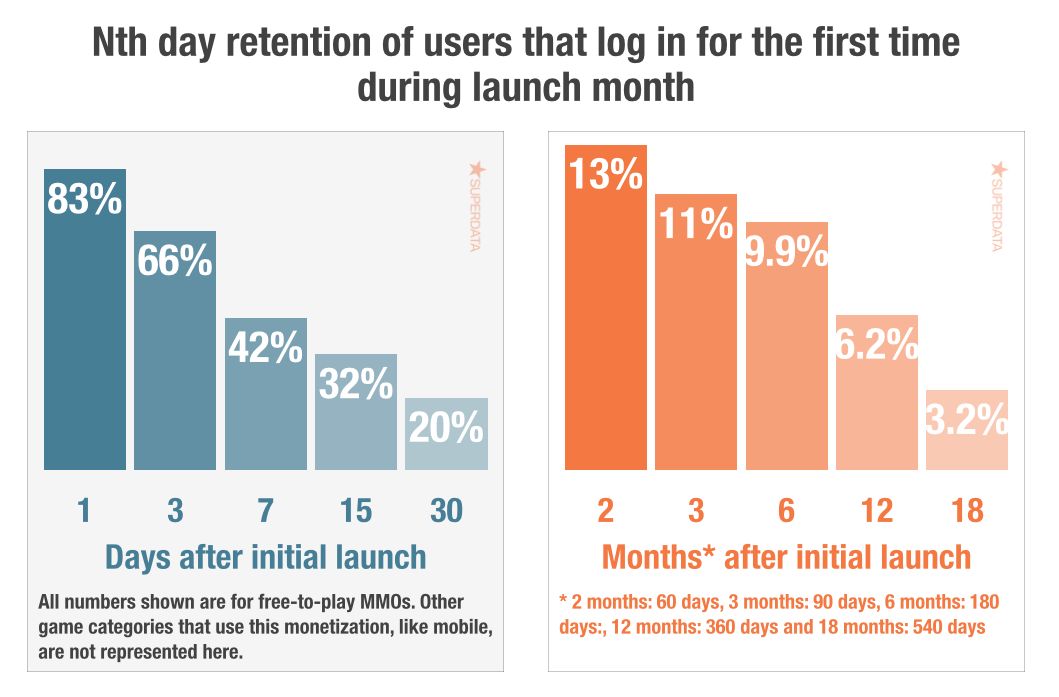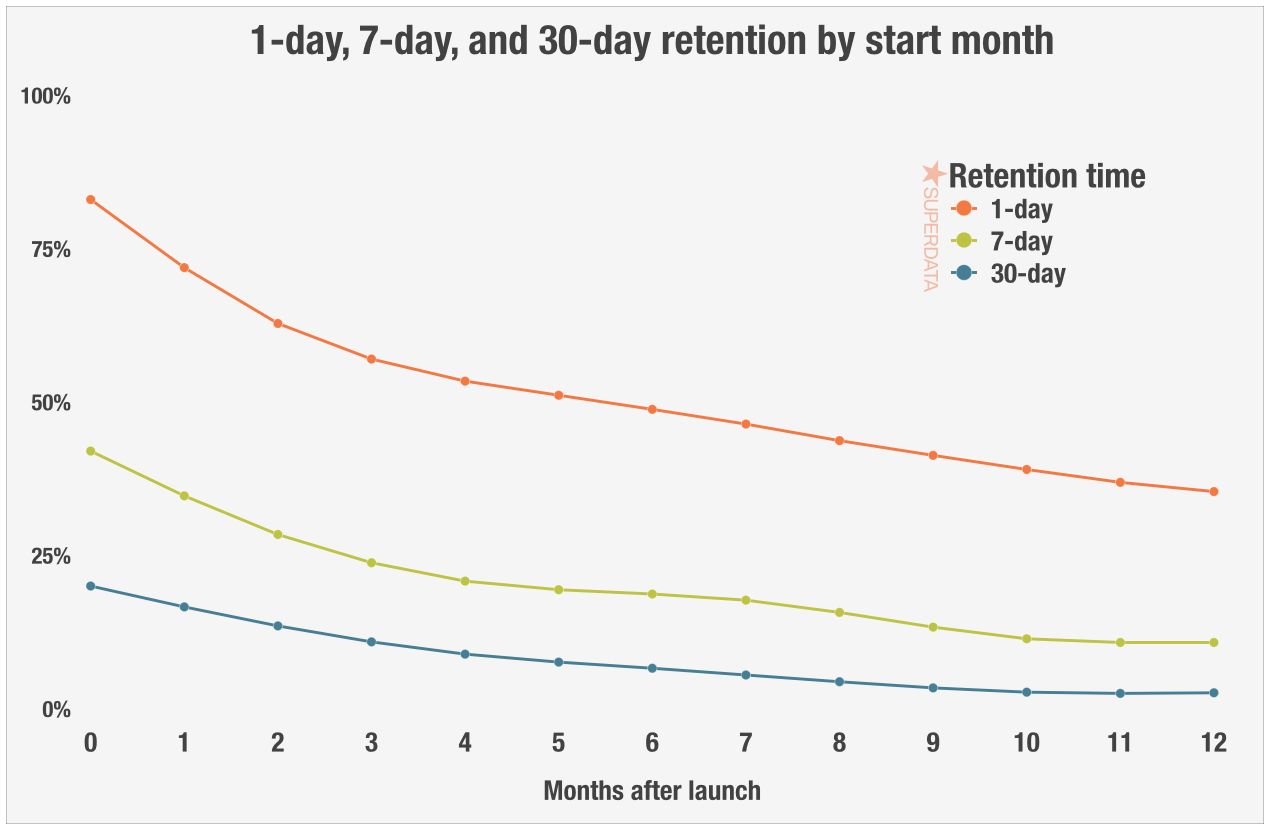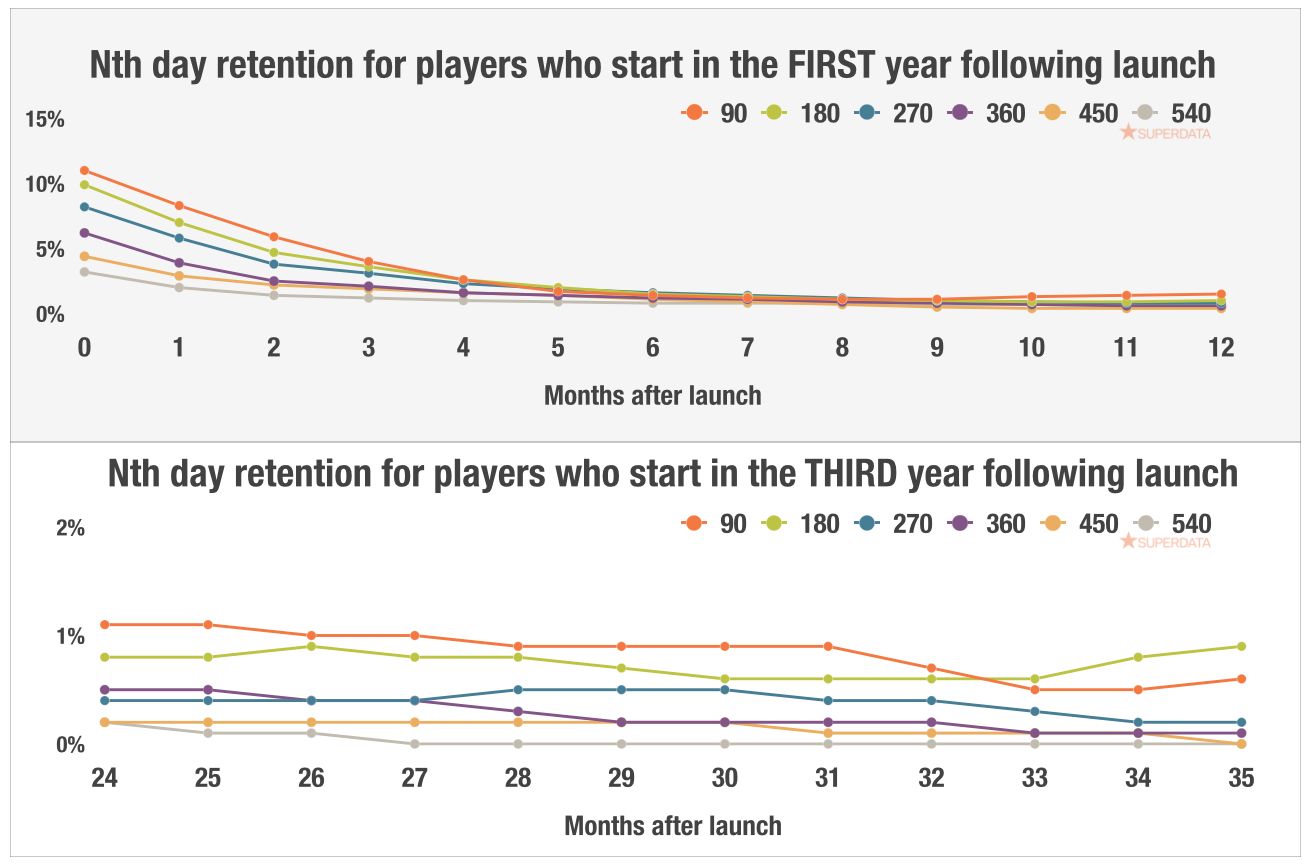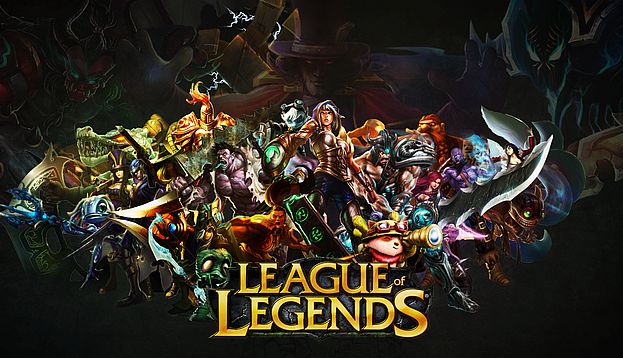Now that free-to-play is an established revenue model and accepted by both game companies and consumers, the underlying economics have shifted. Specifically, where initially the market for MMOs focused largely on acquisition, it now emphasizes retention. Keeping your players happy is a much more effective way of spending your time than to merely churn through them and get new ones.
However, following any successful launch, free-to-play MMOs face the difficult task of retaining their players for as long as possible in a process that can seem chaotic and unpredictable. Analyzing the login data we collected from a diverse set of free-to-play titles over five years, we have identified several general patterns that guide player retention and isolated key trends in this process.
First Ones In, Last Ones Out
The closer to launch that players first sign on, the likelier they are to be playing on the Nth day after their first login. This is because highly interested players are less likely to wait before they start playing and will not quit playing a highly anticipated game without fully exploring its full offering. On average, 6.21 percent of players who logged in for the first time in the 1st month a game is released will log on 360 days after their first login. By comparison, only one tenth of players (0.63 percent) who logged in for the first time in the 12th month after a game is released will log on 360 days after their first login.

Who Sticks Around After Launch
Following the marketing effort surrounding the release of your game, a slew of new curious users will try it. But they are also quick to decide whether or not they like it enough to continue using it. Across free-to-play MMOs we observe that Nth-Day Retention of players that log in for the first time during launch month follows a standard service user decay curve. Within the first month, the percent of users returning on the Nth day drops dramatically, with the dropout rate decelerating over time. The observation that only the most dedicated users stay for the long term may seem obvious, but it also reveals a great deal about what to expect down the road.

Early Retention Drop-Off
Among players who start playing a free-to-play MMO during the month of its initial release, the percentage that play on the Nth day after their initial login drops substantially. Specifically, 83 percent of players who log in for the first time in the same month as the game’s release will log on the following day. As time progresses, retention suffers as only 20 percent of players who log in for the first time during launch month will log on 30 days later. However, when users start playing twelve months after launch, the percentage that play on the Nth day falls even faster. Roughly one-third of players (35 percent) who log in for the first time one year after launch will log on the next day and only 3 percent will log on after 30 days.
Stabilization and Dedicated Late Arrivals
For free-to-play MMOs we see stabilization occurring generally 24 months after release, as this is a period in which the quality of newly arriving players improves. Players that start playing at this time are generally introduced by word-of-mouth or have made the decision to join after more careful consideration rather than trying the game out of boredom or serendipity. Consequently, retention among these late arrivals skews higher, with roughly 40% of users logging on one day after their first login and 2 percent of them returning on the 30th day after they first log in.

Conclusion and Thoughts On MMO Retention
The free-to-play MMO market is a mature entertainment market, as its underlying dynamics have shifted from primarily acquisition-focused to one where retention is key. Based on the data we’ve collected on titles in this category over the past few years, we observe that a strong initial launch, fueled by an effective marketing campaign, helps establishing a loyal customer base. As the retention dynamics for free-to-play MMOs follows a standard service user decay curve, the first 30 days after launch are also critical in assessing the long term viability and success of a title. Finally, titles that make it past the two year mark generally experience an influx of self-qualifying and valuable users.
Methodology
The above analysis is based on the login data collected from both large and small free-to-play MMOs, involving over one million unique users in aggregate over the course of a five year period. On a monthly basis SuperData receives behavioral and spending information from more than 37 million digital gamers across over 500 titles. Data sources include publishers, developers and payment service providers. For more information on our methodology, please go here.
Analysis by [a]listdaily
This study by SuperData contains some very interesting insights that are of great importance to marketers and game designers working on free-to-play MMO titles. The data showing that your first players are ones who tend to stay the longest puts added emphasis on your initial marketing efforts. Identifying and energizing your likely audience, especially for a core game, assumes an added importance in the light of this information.
The marketing effort for a successful MMO should therefore be designed to lead up to the launch of the game with a strong effort to get the target audience into the game early. Perhaps extra incentives, including early discounts on in-game items, should be offered to boost early adoption of the game.
As you would expect, only some 20 percent of players who logged onto the game in the first month of launch will still be playing the game a month later. That’s far better, though, than the picture after one year, with one-month retention falling to 3 percent. What can be done about that The answer probably lies partly in marketing, and partly in game design. Crafting specific in-game offers with these stats in mind may boost retention numbers, but it’s also true that game content will make a difference as well. That;s going to be dependent on the game, but if designers can bring in substantially different and interesting content (perhaps items that appeal to new segments of the market) this may aid in retention after one year.
Interestingly, games that manage to keep players for long enough will find late arrivals beginning to perform better. This may be due to the game’s veterans acting as ambassadors or salespeople, helping to convince new players to try things out. Again, marketers may be able to help this along with careful promotions (invite a friend, get a bonus if they sign up). Design tweaks may also help with this, but of course this has to be careful of balance issues.
It’s clear that the longer a game can retain players, the better it will perform monetarily. Thus, both designers and marketers should give some thought to the extended plan for the game, both in terms of content and in terms of marketing. While the plan may be adjusted depending on the feedback from the audience, it should help to have some idea of how the game will be supported and extended over time. The community aspect of this cannot be ignored, either, as creating a welcoming atmosphere for new players (and for veterans, to encourage retention) is a critical, ongoing need in MMOs.

